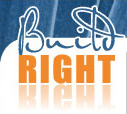Cautions with metal roof sheeting
For personal safety, sheets should be handled wearing clean, dry gloves. Sheets taken freshly from packs have an oily surface and care must be taken when walking over newly laid sheets until the oil has had time to evaporate. This applies particularly to steeply pitched roofs.
Wearing gloves helps to preserve the surface finish. Do not slide sheets over rough surfaces or over each other and do not drag tools, etc over sheets.
If it is necessary to saw cut sheets, on-site care should be taken to avoid cutting over other sheeting when using power saws which produce hot metal particles, particularly in the case of Colorbond steel. If such cutting is necessary, a protective covering should be placed over the lower sheets. When saw-cutting Colorbond, use padded supports and cut sheets with the face side downwards. Also, it is preferable to use metal cutting steel blades in power saws (minimum 4,000 RPM). These produce fewer fine metal particles and leave less burred edges than carborundum discs.
To provide temporary protection during production, handling and transport, some Colorbond steel roof and wall claddings and accessories are coated with a plastic film before rolls are formed. This plastic material has a relatively short life under exterior exposure conditions. It should be removed either immediately before or immediately after installation.
Electrolytic (galvanic) corrosion has a detrimental effect on the durability of any metal roof covering. Precautions should be taken to avoid this type of corrosion.
Avoid the use of different metals together, whenever possible, for example:
- rainwater should not be permitted to drain from copper onto galvanised sheet or aluminium
- new galvanised steel will rapidly corrode if it is in contact with rust from an earlier corrosion.
